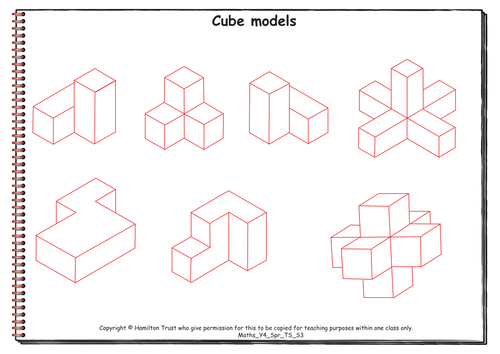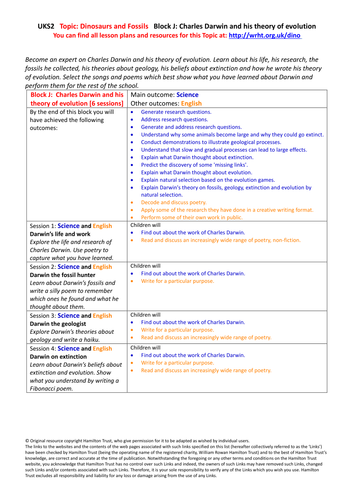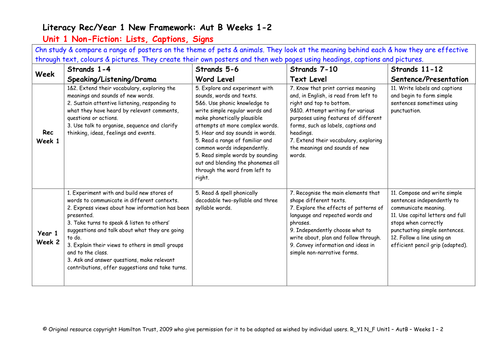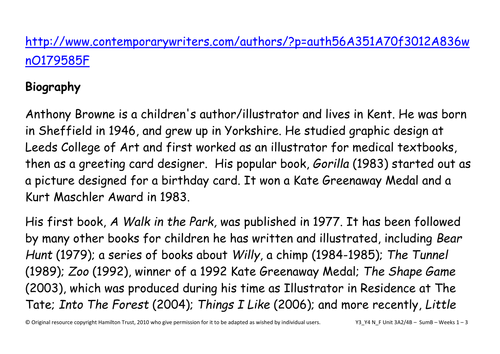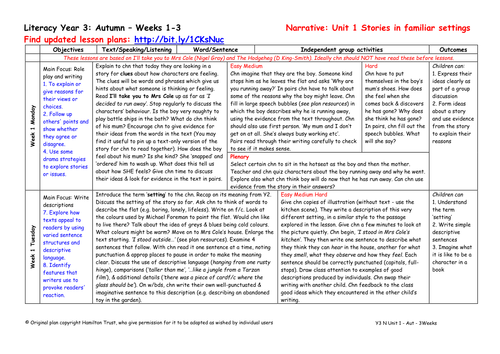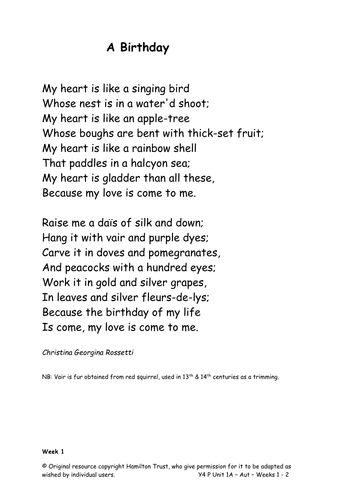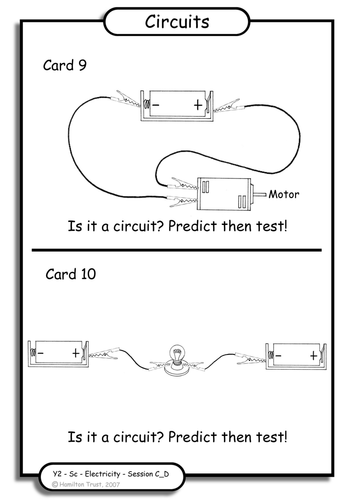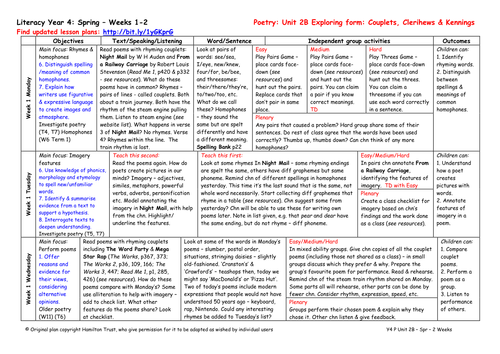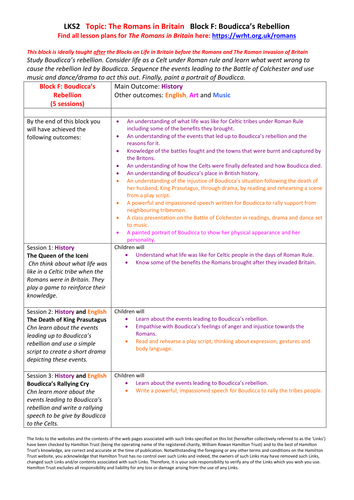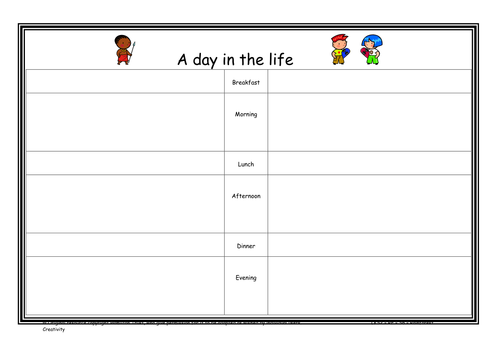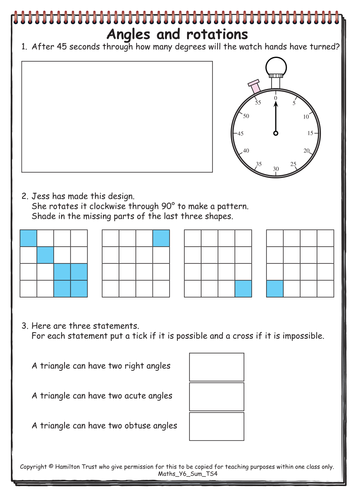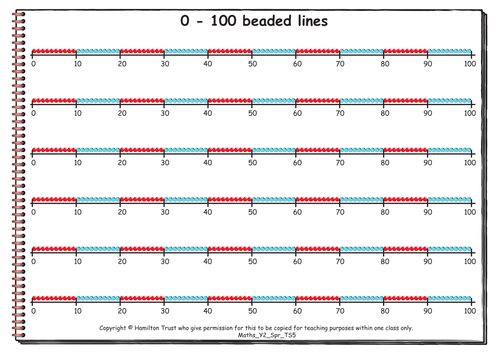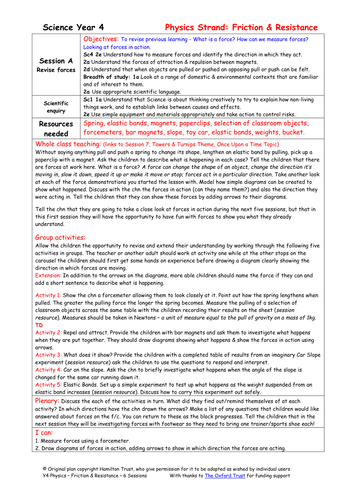
3k+Uploads
10009k+Views
11617k+Downloads
All resources

Maths Y4 Spring Teaching Sequence S3
Properties of 3D solids (three days).
Children revise the names and properties of 3D solids and learn the name and properties of the tetrahedron. Straws are used to make skeletons of 3D shapes, reinforcing the numbers of edges and vertices. Children investigate which nets will make a cube and investigate nets of other shapes including packaging.
Find additional lesson plans and resources at www.hamilton-trust.org.uk.

Dinosaurs and Fossils - Charles Darwin and his theory of evolution - Upper Key Stage 2
Be a palaeontologist! Become an expert on Charles Darwin and his theory of evolution. Learn about his life, his research, the fossils he collected, his theories about geology, his beliefs about extinction and how he wrote his theory of evolution. Select the songs and poems which best show what you have learned about Darwin and perform them for the rest of the school.
Includes:
- Topic Overview
- Block Overview
- Lesson 01: Darwin's life and work
Explore the life and research of Charles Darwin. Use poetry to capture what you have learned.
- Lesson 02: Darwin the fossil hunter
Learn about Darwin’s fossils and write a silly poem to remember which ones he found and what he thought about them.
- Lesson 03: Darwin the geologist
Explore Darwin’s theories about geology and write a haiku.
- Lesson 04: Darwin on extinction
Learn about Darwin’s beliefs about extinction and evolution. Show what you understand by writing a Fibonacci poem.
- Lesson 05: Darwin and evolution
Explore how Darwin came up with his theory of evolution by natural selection and write a Horrible Histories style song.
- Lesson 06: Evolution performance
Select the songs and poems that best show what you have learned about Darwin. Practise and then perform them for the rest of the school.
Find more lesson plans and resources at www. hamilton-trust.org.uk.

Yr1 NF Unit 1 Lists, captions and signs
Children study and compare a range of posters on the theme of pets and animals. They look at the meaning behind each and how they are effective through text, colours and pictures. They create their own posters and then web pages using headings, captions and pictures.

Yr 3/4 NF Unit 3A2-4B Persuasive Writing: Zoos
Explore persuasive texts and writing through Anthony Browne’s book Zoo. Research the case for and against zoos and design a questionnaire.
Explore other issues about looking after animals through Michael Morpurgo’s The Dancing Bear. Debate the issues raised.
Find other lesson plans and resources at www.hamilton-trust.org.uk.

Yr 3 Poetry Unit 3B Language play: Riddles
A two week poetry unit which starts off teasing children’s brains with the riddle game from the Hobbit. Then children move on to learning favourite poems by heart, writing own riddles and creating wordplay jokes.
A guaranteed fun-filled favourite for boys!
Find other lesson plans and resources at www.hamilton-trust.org.uk.

Yr 3 Narrative Unit 1 Stories in familiar settings
Children read I’ll Take You to Mrs Cole and explore its imaginative setting. They extend this work by looking at Harry Potter and Toy Story and comparing film and written texts. Finally (optional week) children study the works of John Burningham focussing on the settings.
Hamilton’s English planning covers all aspects of English, including SPAG, within the context of a wide range of fiction, non-fiction and poetry genres, such as traditional tales, recounts and performance poems.

Sound - Listen Up! - Year 4
The rock stars of the world need your help! They want their children to come to their concerts and rock-out, but they want to protect their precious ears! Find out all you can about sound; how it travels, pitch and volume. Then investigate materials to see which will provide the best insulation against sound. Be ready to present your ideas to a famous panel.
Includes 6 session plans & resources:
01 - Sound walk
02 - Good vibrations
03 - Pitch and volume
04 - Pardon?
05 - Ssssshhhhhh!
06 - The Rock Star Challenge
Hamilton’s science scheme uses hands-on investigative science activities to promote a deep understanding of scientific concepts and help children develop effective methods of scientific enquiry. Our scheme is fresh, original and free!

Yr 4 Poetry Unit 1A: Creating Images
Children use poems by Christina Rossetti to appreciate how writers use figurative and expressive language to create images and atmosphere – alliteration, similes, powerful verbs and adverbs.
Children perform one of her poems and write a poem on a similar theme.
Hamilton’s English planning covers all aspects of English, including SPAG, within the context of a wide range of fiction, non-fiction and poetry genres, such as traditional tales, recounts and performance poems.

Simple circuits
Children discover for themselves how to make a simple circuit to light a bulb using a few basic components. Compare the circuits to a diagram of a simple circuit to see how they can be represented.
Suitable for Year 2 pupils.
Find other lesson plans and resources at www.hamilton-trust.org.uk.

Yr 2 Poetry Unit 3 Silly Stuff: Language Play
Children read, learn and perform examples of tongue twisters and nursery rhymes. They tackle riddles and create their own based on the examples. They enjoy nonsense poems and appreciate how punctuation helps reading aloud, before creating a class poetry book.
Find other lesson plans and resources at www.hamilton-trust.org.uk.

Yr 4 Poetry Unit 2B Exploring form
Look at the structure of Couplets, Clerihews and Kennings. Practise techniques for finding rhymes. Investigate homophones including words that are commonly confused. Children write poems in the different forms for written or spoken publication.
Find other lesson plans and resources at www.hamilton-trust.org.uk.

Everyday materials - Let's Build - Year 1
Explore different materials and sort them into groups before writing songs based on their properties! Consider what it would be like if the tables were made of jelly or the chairs were chocolate! Then recreate the story of the three little pigs and predict what will happen to their houses.
Includes 6 session plans & resources
1 - What materials can we find?
2 - Matching materials
3 - Magnets and metal
4 - Sorting objects
5 - The three little pigs and their buildings
6 - The alternative three little pigs
Hamilton's brand new science scheme is now complete on our website. We have replaced the science planning materials with a completely new, and improved, set. The National Curriculum for England is now fully covered in regular 6-session blocks to fit into half-term slots. Find out more: www.hamilton-trust.org.uk/scites

Boudicca's rebellion
Children study Boudicca’s rebellion.
They consider life as a Celt under Roman rule and learn what went wrong to cause the rebellion led by Boudicca. They sequence the events leading to the Battle of Colchester and use music and dance/drama to act this out. Finally they paint a portrait of Boudicca.
Includes:
- Topic Overview
- Block Overview
- Lesson 01: The Queen of the Iceni
Children think about what life was like in a Celtic tribe when the Romans were in Britain. They play a game to reinforce their knowledge.
- Lesson 02: The death of King Prasutagus
Children learn about the events leading up to Boudicca’s rebellion and use a simple script to create a short drama depicting these events.
- Lesson 03: Boudicca’s rallying cry
Children learn more about the events leading to Boudicca’s rebellion and write a rallying speech to be give by Boudicca to the Celts.
- Lesson 04: The Battle of Colchester
Children learn about the battles fought between Boudicca and the Romans. Using soundtrack of Mornay’s dream, they perform a dance/drama of the Battle of Colchester.
- Lesson 05: The story ends and the legend begins
Children learn how Boudicaa’s rebellion ended and create a portrait of Boudicca showing her character as a warrior and a proud leader of her tribe’s people.
This block is part of our Key Stage 2 Cross-Curricular Topic The Romans in Britain.

A day in the life! Rainforest Diaries
Your lunch is what you find to eat in the rainforest, not the contents of mum’s packed lunch! But there are other important differences too!
Children use their notes from the previous session to compare their lives to those of children in the Jungle.

Maths Y4 Autumn Teaching Sequence 4
Multiplication and division (including commutativity, and rounding up or down after division) (three days).
Children use commutativity (the fact the multiplication can be done in any order, a x b is the same as b x a) and their knowledge of multiplication facts to multiply single digits together, using jottings where necessary, and write the corresponding divisions. They divide by single digits using knowledge of multiplication and division facts, find remainders, recording jottings where helpful. They decide whether to round the answer up or down according to the context of a word problem. Multiplication is used to check division.
Hamilton’s maths resources not only help you plan your maths lessons, but also ensure mathematical progression from Reception through key stage 2.

Maths Y6 Summer Teaching Sequence 4
Revision: Shape (two days).
Children discuss turns of multiples of 90° on the clock face, and rotate shapes through 90°. They sort shapes according to their properties, e.g. number of right angles, obtuse angles, acute angles, lines of symmetry, and pairs of parallel sides. They practise measuring angles accurately with a protractor.
Find additional lesson plans and resources at www.hamilton-trust.org.uk.

Yr 4 Narrative Unit 5 Plays
Use proverbs to stimulate creation of some short plays based on everyday life. Children then look closely at playscript features and stage directions to develop characters and setting. Finally children create scenes based on events in their favourite Roald Dahl books.
Find other lesson plans and resources at www.hamilton-trust.org.uk.

Maths Y1 Summer Teaching Sequence M6
Telling the time to the half hour (three days).
Children revise telling the time to the hour and half hour, using their arms to show times, matching dominoes, filling in missing times on a timeline and matching times before a sand timer runs out. The digital format is also introduced.
Find additional lesson plans and resources at www.hamilton-trust.org.uk.

Maths Y2 Spring Teaching Sequence 5
Add/subtract 11, 12, 13, 21, 22, 23 (three days).
Children use J10 (Jump 10, adding/subtracting two-digit numbers by adding/subtracting the tens first) to add and subtract 11, 12, 13, using a bead string initially and then recording their steps on either beaded or landmarked lines. The special cases where adding subtracting 11, 12 or 13 will take them past another multiple of ten (e.g. 48 + 13, 51 – 12) are given particular attention. Children then go on to apply the same strategy to add and subtract 21, 22 and 23 including in the context of money.
Find additional lesson plans and resources at www.hamilton-trust.org.uk.

Revise forces
It’s forces ‘n’ fun in this session as the children get the opportunity to show what they already know. Through hands on activity they use slopes, magnets and elastic bands to revise previous learning. Forcemeters at the ready! Suitable for Y4 pupils.

